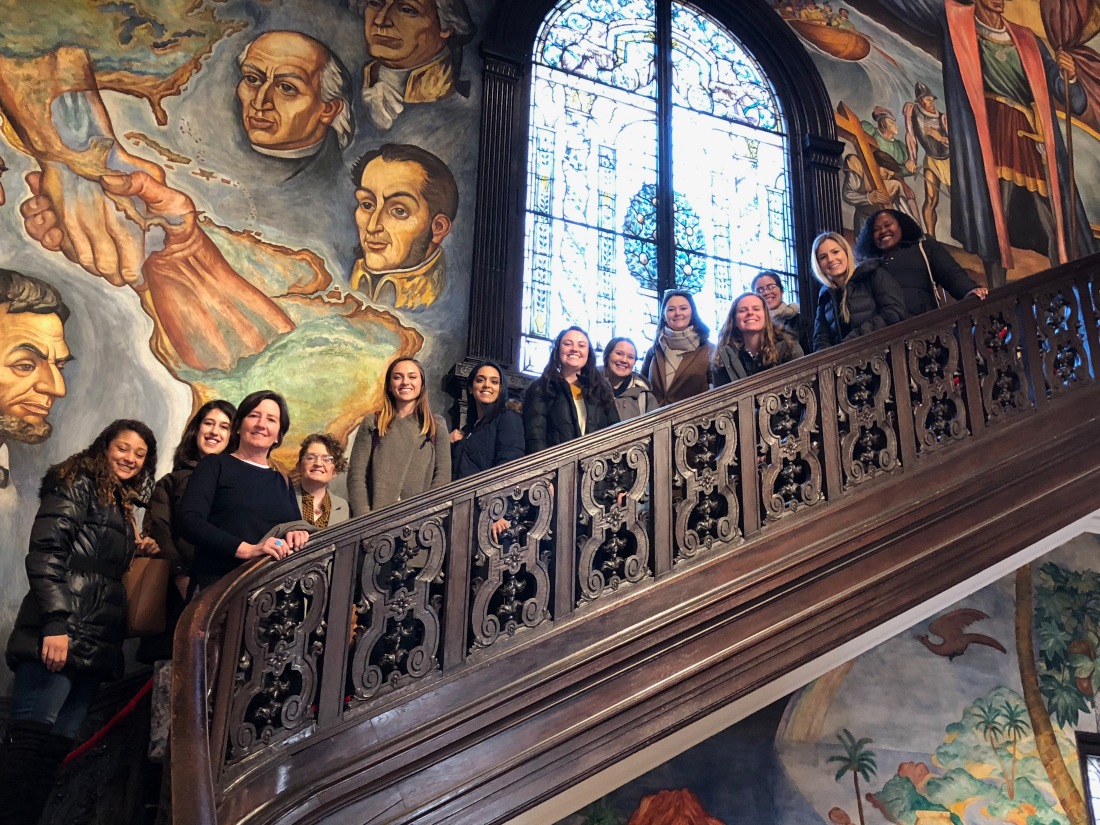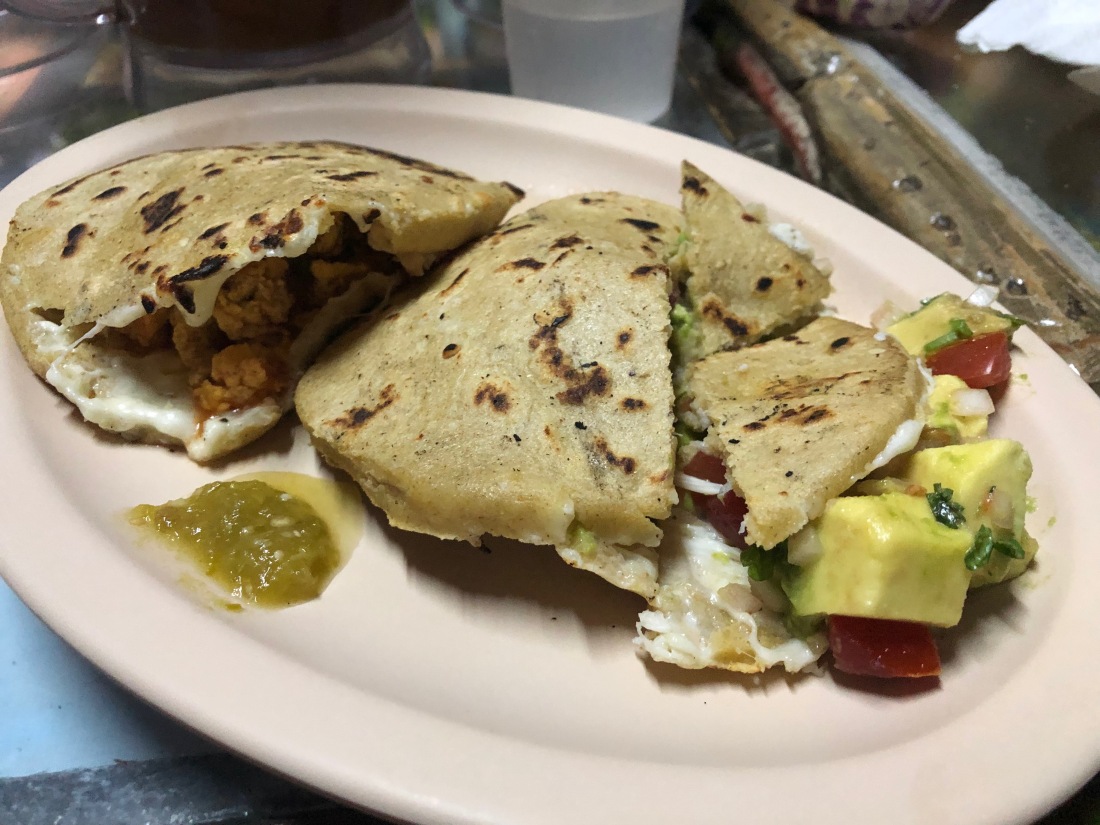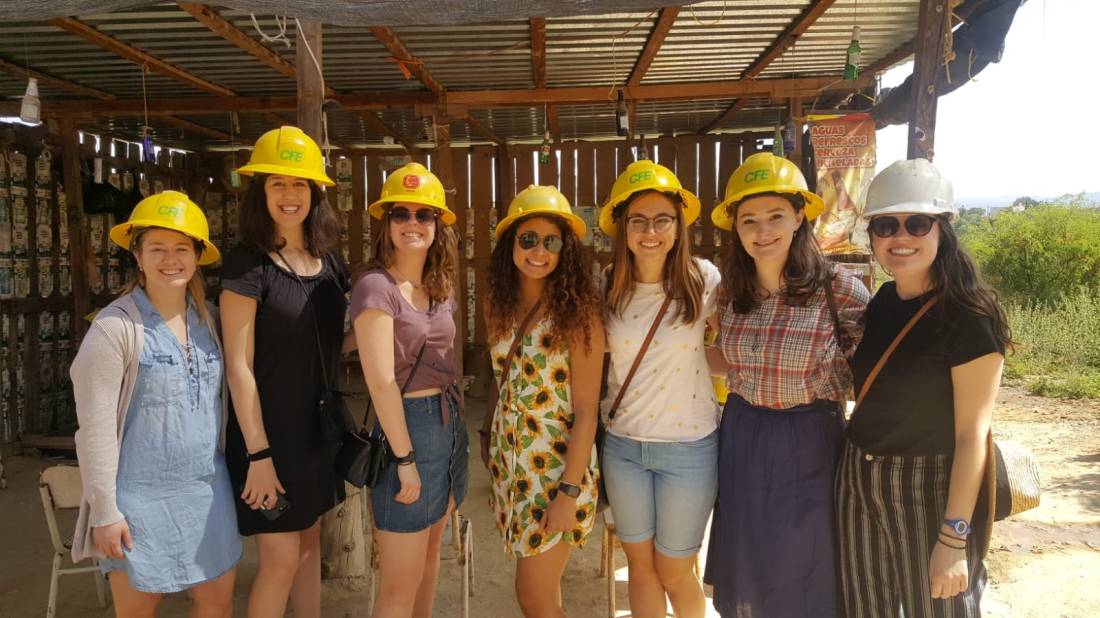Hola from Querétaro!
Before we talk about our first 1.5 days in Mexico, let’s go back to January when we (twelve students and two professors) first met as a class at the Mexican Cultural Institute in Washington, D.C. The executive director of the institute, Señor Alberto Fierro, gave us a presentation on Mexican culture, economy, and history. We were so grateful for such a wonderful introduction to the class and it made us very excited to learn more before we embarked on our journey.

To continue our preparation, we created presentations in pairs for our second class meeting in February. We researched topics including the history of Querétaro, indigenous cultures, food, Spanish language, manners, education, and healthcare. One of us even made a guide of common phrases in Spanish for us to use while abroad.
During our February meetings, we also decided to research the field of speech-language pathology (SLP) in Mexico. After reading articles by our host, Dra. Donna Jackson-Maldonado, about language delays in Mexican children, effects of early intervention on language outcomes in pre-term infants, assessing the effectiveness of a short-form version of the MacArthur-Bates Communicative Development Inventory (a way for clinicians to use parents as informants about their child’s language). From there, we developed a list of questions that we still had regarding typical SLP practice in Mexico.

We also read articles pertaining to internal collaboration in the field of SLP. One article had developed a list of competencies for effective global engagement that we believed would apply well to our study abroad experience. The competencies were broken down into the framework of disposition, knowledge, skills, and attitudes. Some of the competencies we thought would impact our trip the most were: empathy, humility, inquisitiveness, self-awareness, ability to engage in critical and dialectical thinking. For one of our our learning outcomes for the course will be to describe instances throughout the trip that directly relate to the competencies discussed in the article.
After all our preparation, we were extremely excited to arrive Saturday afternoon in Querétaro. We were able to spend the evening in the city center, which is about a 25-minute walk from our hotel. We went over the itinerary for the week, including our site visits and Spanish classes. We had our first group dinner, where we ate gorditas (a pastry made with masa stuffed with fillings such as cheese and meats) at Las Deliciosas Gorditas Del Portal. We spent the rest of the night wandering around the city center, taking in the sights and sounds.

Sunday morning, we met for breakfast at the hotel and prepared for our day trip to Mineral de Pozos and San Miguel de Allende, which are both pueblos mágicos (magic towns). Our day mirrored chronological history of Mexico, beginning with a demonstration of pre-Hispanic instruments in Pozos. A local artist performed music on instruments he made using local plants and other materials. We were also lucky enough to have a tour of a historic mine that produced gold, copper, zinc, and mercury. We learned about the labor-intensive and scientific process of mining for gold and were able to descend into a former mine to see an underground cavern. Our guide even taught us a few words of his indigenous dialect, Chichimec. The area was home to over 500 mines until the 1970s, when it became a ghost town. The area is experiencing a rebirth, and we were happy to see all that it had to offer.


After a 45-minute drive, we arrived in San Miguel de Allende. This city is called El Corazón de México (the heart of Mexico) and has a reputation for attracting artists and tourists. We split up into groups and were able to explore the city all afternoon. We all toured the Parroquia de San Miguel Arcángel, a church that was built in the 17th century. Many of us also bought crafts and other artwork from local artisans. On our way home, we reflected on what we experienced and learned during our first full day in Mexico.

Tomorrow, we are excited for our first site visit and begin Spanish classes at the local university!
Hasta mañana,
Alison and Julia
Looks like a great start! Have so much fun!
LikeLike